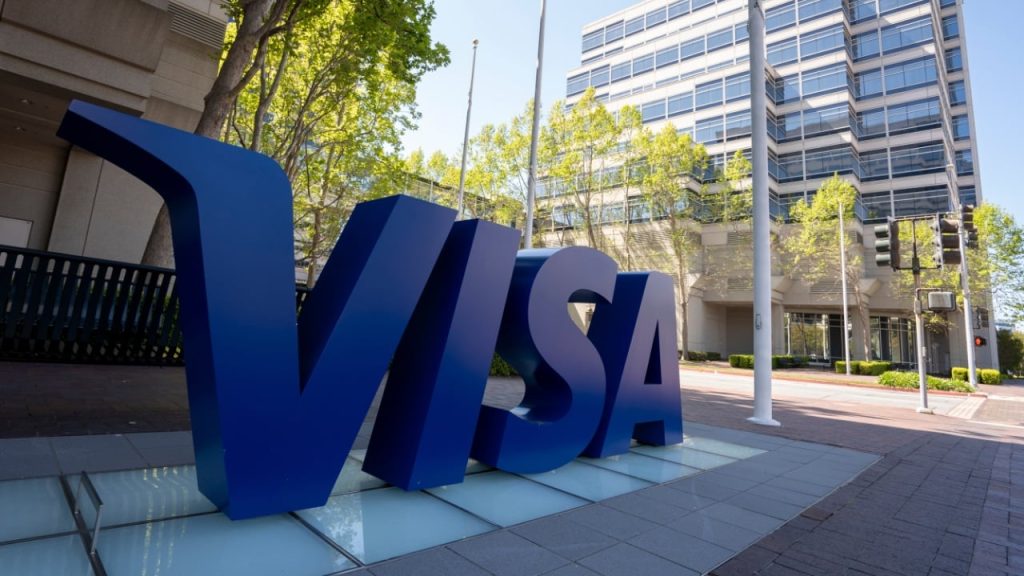
Visa’s Embrace of Stablecoins: A Strategic Leap into the Future of Payments
Introduction: The Convergence of Traditional Finance and Digital Innovation
The financial landscape is undergoing a profound transformation, driven by the rise of digital assets and blockchain technology. Visa, a global leader in payment processing, has recognized this shift and is strategically positioning itself at the forefront of this evolution. By expanding its support for stablecoin settlements, Visa is not only adapting to the changing financial ecosystem but also actively shaping its future. This report explores the motivations behind Visa’s move, the technological advancements enabling this shift, and the broader implications for the payments industry.
The Rise of Stablecoins: A Bridge Between Fiat and Crypto
Stablecoins have emerged as a critical bridge between traditional finance and the volatile world of cryptocurrencies. Unlike speculative digital assets, stablecoins are pegged to stable assets—most commonly the U.S. dollar—ensuring price stability. This stability makes them ideal for various financial applications, including:
– Cross-Border Payments: Stablecoins enable near-instant, low-cost international transactions, eliminating the inefficiencies of traditional banking systems.
– Remittances: Migrant workers can send money home more affordably and quickly, bypassing high fees and slow processing times.
– Trading and Investment: Traders use stablecoins to hedge against market volatility, allowing seamless entry and exit from crypto markets.
– DeFi (Decentralized Finance): Stablecoins are the backbone of decentralized lending, borrowing, and yield farming platforms, providing liquidity and stability.
As stablecoin adoption grows, the demand for efficient settlement solutions has surged. Visa’s decision to expand its stablecoin support is a direct response to this demand, positioning the company as a key facilitator in the digital asset economy.
Visa’s Strategic Expansion: Key Developments and Innovations
Visa’s recent announcement of expanded stablecoin settlement support represents a significant milestone in its digital asset strategy. The expansion includes several key components:
1. Addition of New Stablecoins
Visa has integrated support for PayPal USD (PYUSD), Global Dollar (USDG), and Euro Coin (EURC). This diversification allows Visa to cater to a broader range of users and use cases. Notably, PYUSD, issued by Paxos, is a major endorsement from a leading payments player, reinforcing Visa’s commitment to interoperability.
2. Integration of New Blockchains
Visa has extended its settlement network to include Stellar and Avalanche, complementing its existing support for Ethereum and Solana. This expansion enhances flexibility and scalability, enabling partners to settle transactions across multiple blockchain networks. Stellar’s focus on cross-border payments and Avalanche’s high throughput make them strategic additions.
3. Enhanced Settlement Capabilities
Visa’s partners—including issuers and acquirers—can now settle transactions in USD and EUR stablecoins across various blockchain networks. This streamlines the settlement process, reducing costs and improving efficiency.
Why Visa is Embracing Stablecoins
Visa’s strategic pivot toward stablecoins is driven by multiple factors:
1. Meeting Growing Demand
The rapid adoption of stablecoins has created a pressing need for reliable settlement solutions. Visa is capitalizing on this opportunity by providing a trusted infrastructure for digital asset transactions.
2. Staying Competitive
The payments industry is evolving rapidly, with new players and technologies emerging. By integrating stablecoins, Visa ensures it remains at the forefront of innovation, maintaining its market leadership.
3. Exploring New Revenue Streams
Stablecoin settlements open new revenue opportunities for Visa, diversifying its business model beyond traditional card-based transactions.
4. Facilitating Innovation
By supporting stablecoins, Visa fosters innovation in the payments industry, enabling the development of new financial applications and services.
5. Revolutionizing Cross-Border Payments
Visa aims to lead the transformation of cross-border payments, making global transactions faster, cheaper, and more accessible.
The Technological Framework Behind Visa’s Stablecoin Integration
Integrating stablecoins into Visa’s settlement infrastructure requires a robust technological foundation. Visa leverages its existing payments network and expertise in transaction processing to build a secure, scalable, and interoperable platform. Key components include:
1. Blockchain Integration
Visa connects its systems to multiple blockchain networks, enabling seamless processing of stablecoin transactions.
2. Compliance and Security
Visa implements stringent Know Your Customer (KYC) and Anti-Money Laundering (AML) procedures to ensure secure and compliant stablecoin transactions.
3. Interoperability
Visa ensures its stablecoin settlement platform is compatible with other systems in the digital asset ecosystem, allowing users to move funds seamlessly between wallets, exchanges, and applications.
The Future of Payments: Implications of Visa’s Move
Visa’s expanded stablecoin support has far-reaching implications for the payments industry:
1. Faster and Cheaper Transactions
Stablecoins enable near-instant, low-cost transactions, particularly for cross-border payments and remittances.
2. Increased Financial Inclusion
Stablecoins provide access to financial services for unbanked and underbanked populations, fostering greater financial inclusion.
3. Greater Transparency
Blockchain technology enhances transparency and traceability in payments, reducing fraud and corruption risks.
4. Innovation in Financial Services
Stablecoins enable new financial applications, such as decentralized lending and borrowing platforms.
5. Global Payment Networks
Visa’s move could revolutionize international trade by providing near-instant settlement for large transactions.
Challenges and Considerations
Despite the promising outlook, Visa’s stablecoin initiative faces several challenges:
1. Regulatory Uncertainty
The regulatory landscape for stablecoins is still evolving, and new regulations could impact their viability.
2. Security Risks
Stablecoins are vulnerable to hacking and fraud, necessitating robust security measures.
3. Volatility Risks
While stablecoins are designed to maintain stability, they can still experience volatility during market stress.
4. Adoption Barriers
Widespread adoption requires overcoming barriers such as lack of awareness, technical complexity, and regulatory hurdles.
Conclusion: A New Era of Digital Finance
Visa’s expansion of stablecoin settlement support marks a pivotal moment in the convergence of traditional finance and digital innovation. By embracing stablecoins and blockchain technology, Visa is not only adapting to the changing financial landscape but also actively shaping its future. While challenges remain, the potential benefits of stablecoins—faster transactions, greater financial inclusion, and enhanced transparency—are undeniable. Visa’s strategic move signals a broader trend of traditional financial institutions embracing the digital asset revolution, paving the way for a more efficient, accessible, and transparent financial ecosystem. The future of payments is here, and Visa is leading the charge.





